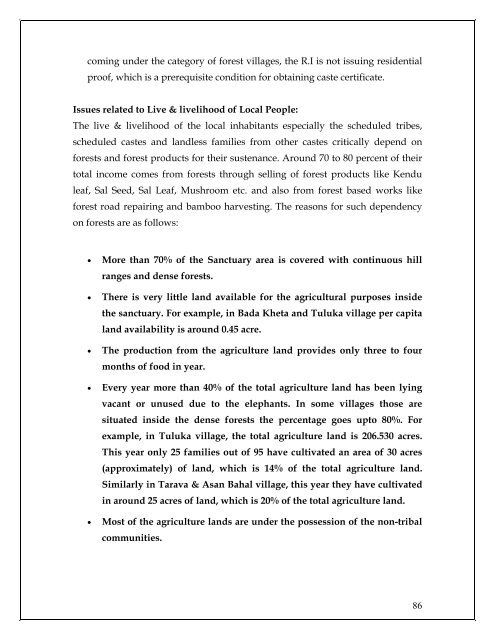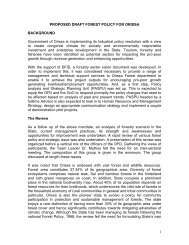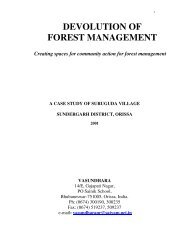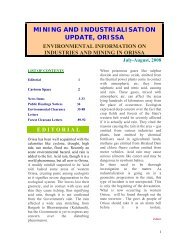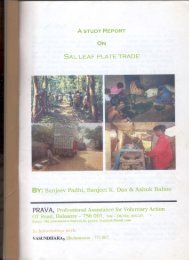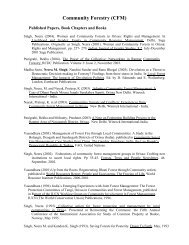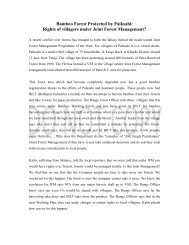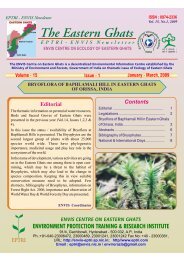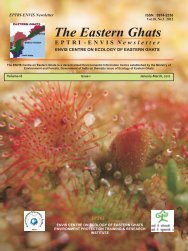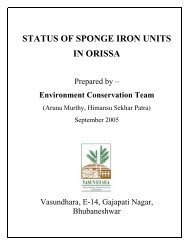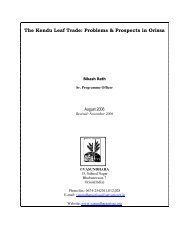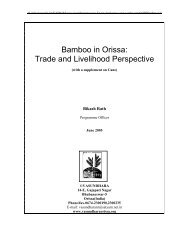Protected Area Network in Orissa - Vasundhara
Protected Area Network in Orissa - Vasundhara
Protected Area Network in Orissa - Vasundhara
- No tags were found...
Create successful ePaper yourself
Turn your PDF publications into a flip-book with our unique Google optimized e-Paper software.
com<strong>in</strong>g under the category of forest villages, the R.I is not issu<strong>in</strong>g residentialproof, which is a prerequisite condition for obta<strong>in</strong><strong>in</strong>g caste certificate.Issues related to Live & livelihood of Local People:The live & livelihood of the local <strong>in</strong>habitants especially the scheduled tribes,scheduled castes and landless families from other castes critically depend onforests and forest products for their sustenance. Around 70 to 80 percent of theirtotal <strong>in</strong>come comes from forests through sell<strong>in</strong>g of forest products like Kenduleaf, Sal Seed, Sal Leaf, Mushroom etc. and also from forest based works likeforest road repair<strong>in</strong>g and bamboo harvest<strong>in</strong>g. The reasons for such dependencyon forests are as follows:• More than 70% of the Sanctuary area is covered with cont<strong>in</strong>uous hillranges and dense forests.• There is very little land available for the agricultural purposes <strong>in</strong>sidethe sanctuary. For example, <strong>in</strong> Bada Kheta and Tuluka village per capitaland availability is around 0.45 acre.• The production from the agriculture land provides only three to fourmonths of food <strong>in</strong> year.• Every year more than 40% of the total agriculture land has been ly<strong>in</strong>gvacant or unused due to the elephants. In some villages those aresituated <strong>in</strong>side the dense forests the percentage goes upto 80%. Forexample, <strong>in</strong> Tuluka village, the total agriculture land is 206.530 acres.This year only 25 families out of 95 have cultivated an area of 30 acres(approximately) of land, which is 14% of the total agriculture land.Similarly <strong>in</strong> Tarava & Asan Bahal village, this year they have cultivated<strong>in</strong> around 25 acres of land, which is 20% of the total agriculture land.• Most of the agriculture lands are under the possession of the non-tribalcommunities.86


